I added Wisconsin to my "life list" of US states at our stop here.
When Lt. Zebulon Pike visited this area in 1805, he recorded its name as Prairie La Crosse, after a ball game played by the Sioux, Ojibwa & Ho-Chunk inhabitants. Nathan Myrick built a trading post in the 1840s at the confluence of the Black and Mississippi Rivers. It was one of the few places on the Wisconsin side of the river where a broad plain existed between the river and the bluffs.
The city of La Crosse was incorporated in 1856 and became a major center of the lumber and brewing industries and the steamboats and sawmills that served them. It remains the largest city on the western Wisconsin border.
La Crosse had the only Prairie Style houses that I saw on the trip, and I only saw them on a HOHO drive-by. Alas, the neighborhood wasn't within walking distance for the short time we would be in La Crosse, and I didn't get much traction trying to get the HOHO bus to make an unscheduled stop. None of the La Crosse houses were designed by Frank Lloyd Wright, but the ones I saw in passing were classic in style.
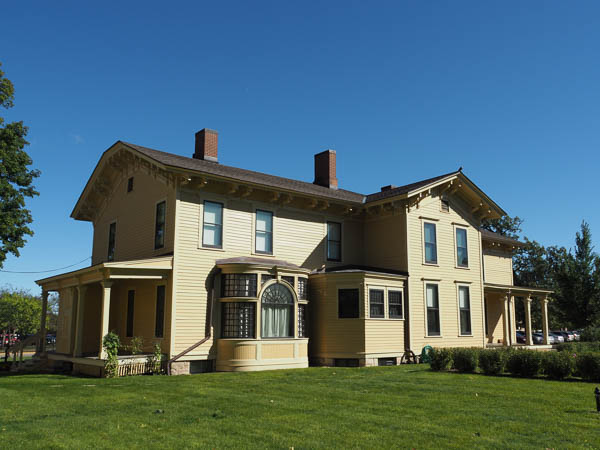
Instead I visited the Hixon House Museum, which was on the HOHO route. The house started life as a modest dwelling, but as the Hixons prospered, they added on rather than uprooting and moving to a larger house in the up-and-coming part of town.
The family donated the house and original furnishings to the La Crosse Historical Society. It was beautifully preserved inside, although no pictures were allowed, and the gardens had been restored. The link has a image of the "Turkish nook" that reflects the Victorian taste for the exotic. It was furnished with items collected by the family on trips to the Middle East.
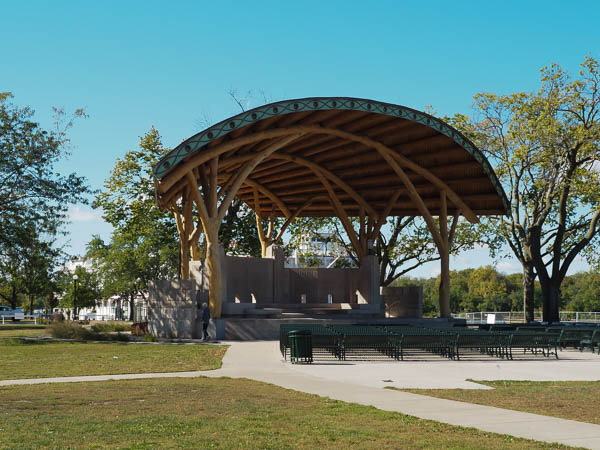
The Art Deco bandstand by the waterfront was a civic project of the 1930s.
In 2019 the city sponsored the construction of a shell to improve acoustics and shelter performers.
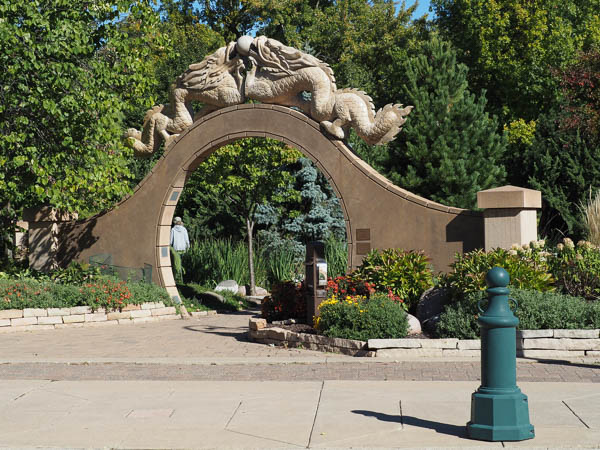 Near the bandstand, the
Riverside International Friendship Gardens occupy the confluence
of the La Crosse and Mississippi Rivers. La Crosse has sister cities
from three continents, and the garden showcases plantings and garden
designs from those areas. There are Cameroon, Chinese, French, Irish,
German, and Norwegian gardens. We wondered if they plan to collect sister
cities from South America and Australia to round out their collection.
Near the bandstand, the
Riverside International Friendship Gardens occupy the confluence
of the La Crosse and Mississippi Rivers. La Crosse has sister cities
from three continents, and the garden showcases plantings and garden
designs from those areas. There are Cameroon, Chinese, French, Irish,
German, and Norwegian gardens. We wondered if they plan to collect sister
cities from South America and Australia to round out their collection.
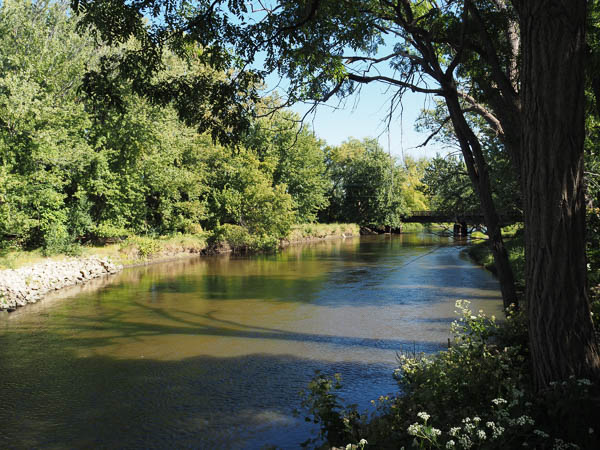
The La Crosse river runs along one side of the garden. The bridge carries railway tracks.
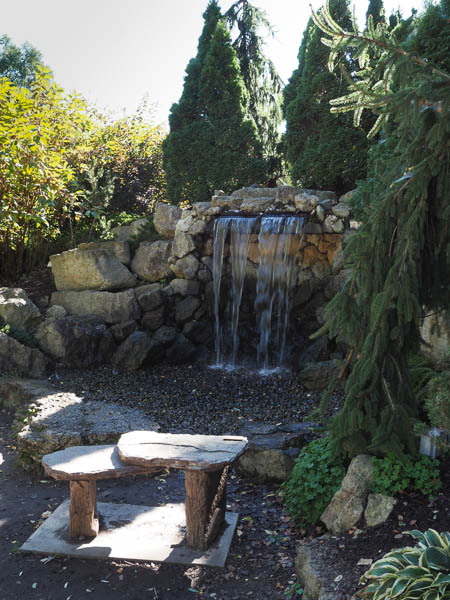
The waterfall is part of the Norwegian garden.
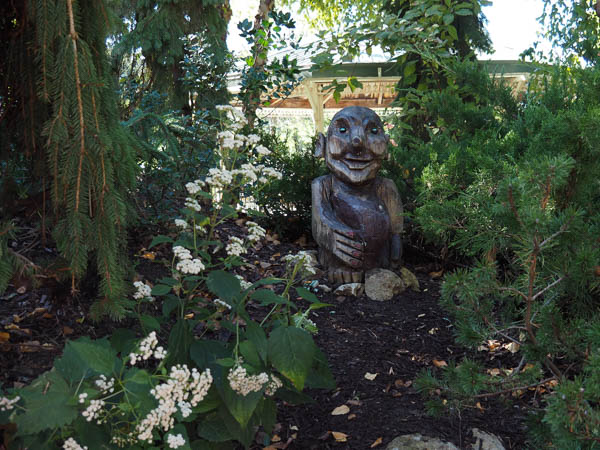
This is just one of several trolls scattered though the Norwegian section.
My camera battery (and spare) ran out before I could take pictures of all the different gardens. The batteries had been sitting idle for so long, they wouldn't hold much charge until I ran them completely out a couple of times.
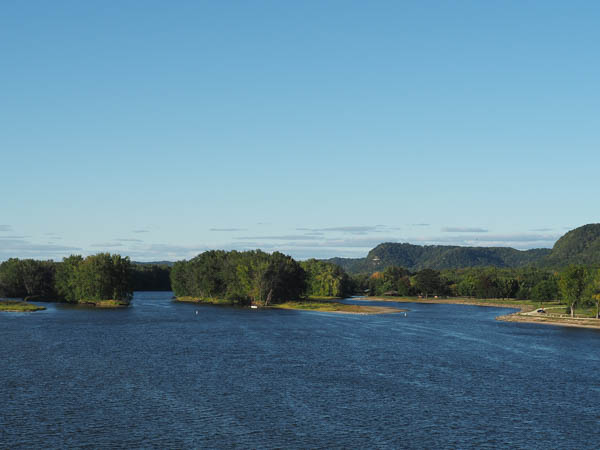
As we proceeded downriver, the many channels wandered through a variety of islands.
Even this far north we could see that the river was low. This would turn into a major catastrophe farther south.
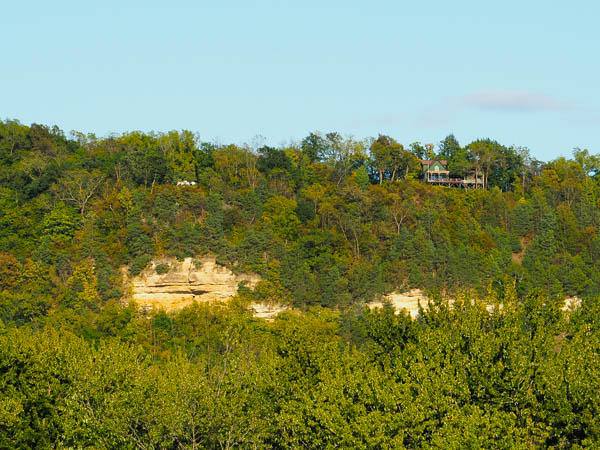
On the Wisconsin side of the river we often saw houses high atop the bluffs. They had a beautiful view, but there didn't appear to be any nearby settlements. We couldn't tell if they were weekend homes or permanent dwellings.
Although the bluffs appear to be high, they are actually the same elevation as the surrounding land. The river has carved a deeper canyon.
Minnesota law states that buildings cannot be visible on the ridgeline, so there were no similar structures on the right bank.
Click your "back" button to return to the previous page or click for our picture album.